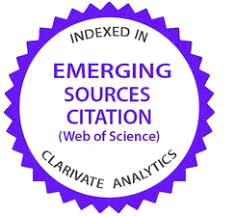Imparare la matematica con Number Worlds: un intervento quinquennale nella scuola primaria
Abstract
The Number Worlds (NW) program is based on Case’s theory of cognitive development and conceptual learning, and it promotes the learning of mathematical concepts through playful-manipulative activities and respecting children’s level of development. This five years-research is meant to develop an Italian adaptation of the program, compare it with traditional teaching, and determine the impact of working memory (WM) on math learning. 56 primary school children participated in the research. Since grade I, 13 pupils (controls) followed traditional teaching of math; 43 children worked with NW, 3 hours a week for 7 months. The pupils were assessed with two WM tests, the Number Knowledge Test (NKT), and the Number Line Estimation Task (NLET) at the beginning of Grade I and at the end of each Grade. At the end of Grade V, the AC-MT battery was also administered. The experimental group improved more than controls on
the NKT and NLET from Grade I to IV. At the end of Grade V, both groups showed a «ceiling effect» in the NKT and NLET performance. However, a difference in favour of the experimental group was found in some AC-MT tasks. WM, together with the curriculum, was predictive of mathematics performance up to class IV.
Keywords
Full Text:
PDFReferences
Camba, R. (2014). La conservazione del numero secondo la teoria della catastrofe. Giornale Italiano di Psicologia, 41, 555-571. doi: 10.1421/78501
Case, R. (1985). Intellectual development: Birth to adulthood. New York: Academic Press.
Case, R. (1992). The mind's staircase: Exploring the conceptual underpinnings of children's thought and knowledge. Hillsdale, NJ: Lawrence Erlbaum Associates.
Case, R., & Okamoto, Y. (1996). The role of central conceptual structures in the development of children's thought. Monographs of the Society for Research in Child Development, 61(1-2).
https://doi.org/10.2307/1166077
Chu, F. W., & Geary, D. C. (2015). Early numerical foundations of young children's mathematical development. Journal of Experimental Child Psychology, 132, 205-212.
https://doi.org/10.1016/j.jecp.2015.01.006 - PMid:25705049
Cornoldi, C., Lucangeli, D., & Bellina, M. (2002). AC-MT 6-11. Test di valutazione delle abilità di calcolo e soluzione dei problemi. Trento: Erickson.
Friso-van den Bos, I., van der Ven, S. H. G., Kroesbergen, E. H., & van Luit, J. E. H. (2013). Working memory and mathematics in primary school children: A meta-analysis. Educational Research Review, 10, 29-44.
https://doi.org/10.1016/j.edurev.2013.05.003
Geary, D. C., Nicholas, A., Li, Y., & Sun, J. (2017). Developmental change in the influence of domain-general abilities and domain-specific knowledge on mathematics achievement: An eight-year longitudinal study. Journal of Educational Psychology, 109(5), 680-693.
https://doi.org/10.1037/edu0000159 - PMid:28781382 - PMCid:PMC5542417
Griffin, S. (2005). Contributions of central conceptual structure theory to education. In A. Demetriou & A. Raftopoulos (Eds.), Cognitive developmental change: Models, methods, and measurement (pp. 264-295). Cambridge: Cambridge University Press.
https://doi.org/10.1017/CBO9780511489938.010
Griffin, S. (2009). Learning sequences in the acquisition of mathematical knowledge: Using cognitive developmental theory to inform curriculum design for Pre-K-6 mathematical education. Mind, Brain, and Education, 3(2), 96-107.
https://doi.org/10.1111/j.1751-228X.2009.01060.x
Griffin, S., & Case, R. (1997). Rethinking the primary school math curriculum: An approach based on cognitive science. Issues in Education, 3, 1-65.
Griffin, S., Case, R., & Siegler, R. (1994). Rightstart: Providing the central conceptual prerequisites for first formal learning of arithmetic to students at risk for failure. In K. McGilly (Ed.), Classroom lessons: Integrating cognitive theory and classroom practice (pp. 25-49). Cambridge, MA: The MIT Press - Bradford Books.
Griffin, S., Clements, D. H., & Sarama, J. (2007). Number Worlds: A prevention/intervention math program. Columbus, OH: SRA/McGraw-Hill.
Hill, F., Mammarella, I. C., Devine, A., Caviola, S., Passolunghi, M. C., & Szcs, D. (2016). Maths anxiety in primary and secondary school students: Gender differences, developmental changes and anxiety specificity. Learning and Individual Differences, 48, 45-53.
https://doi.org/10.1016/j.lindif.2016.02.006
Kalchman, M., & Case, R. (1998). Teaching mathematical functions in primary and middle childhood: An approach based on neo-Piagetian theory. Scientia Paedagogica Experimentalis, 35, 7-53.
Molin, A., Poli, S., & Lucangeli, D. (2007). BIN 4-6. Batteria per la valutazione dell'intelligenza numerica in bambini dai 4 ai 6 anni. Trento: Erickson.
Morra, S. (1994). Issues in working memory measurement: Testing for M capacity. International Journal of Behavioral Development, 17, 143-159.
https://doi.org/10.1177/016502549401700109
Morra, S., Bisagno, E., Caviola, S., Delfante, C., & Mammarella, I. C. (2019). Working memory capacity and the development of quantitative central conceptual structures. Cognition and Instruction, 37(4), 483-511.
https://doi.org/10.1080/07370008.2019.1636797
Moss, J., & Case, R. (1999). Developing children's understanding of the rational numbers: A new model and an experimental curriculum. Journal for Research in Mathematics Education, 30(2), 122-147. doi: 10.2307/749607
https://doi.org/10.2307/749607
Siegler, R. S., & Opfer, J. E. (2003). The development of numerical estimation: Evidence for multiple representations of numerical quantity. Psychological Science, 14(3), 237-250.
https://doi.org/10.1111/1467-9280.02438 - PMid:12741747
DOI: https://doi.org/10.7358/ecps-2021-023-bimo
Copyright (©) 2021 Elisa Bisagno, Sergio Morra – Editorial format and Graphical layout: copyright (©) LED Edizioni Universitarie

This work is licensed under a Creative Commons Attribution-NonCommercial-NoDerivatives 4.0 International License.
Journal of Educational, Cultural and Psychological Studies (ECPS)
Registered by Tribunale di Milano (19/05/2010 n. 278)
Online ISSN 2037-7924 - Print ISSN 2037-7932
Research Laboratory on Didactics and Evaluation - Department of Education - "Roma Tre" University
Executive Editor: Gaetano Domenici - Associate Executive Editor & Managing Editor: Valeria Biasci
Editorial Board: Eleftheria Argyropoulou - Massimo Baldacci - Joao Barroso - Richard Bates - Christofer Bezzina - Paolo Bonaiuto - Lucia Boncori - Pietro Boscolo - Sara Bubb - Giuseppina Castellana - Carlo Felice Casula - Jean-Émile Charlier - Lucia Chiappetta Cajola - Carmela Covato - Jean-Louis Derouet - Peter Early - Franco Frabboni - Constance Katz - James Levin - Pietro Lucisano - Roberto Maragliano - Romuald Normand - Michael Osborne - Donatella Palomba - Nazarena Patrizi - Michele Pellerey - Clotilde Pontecorvo - Vitaly V. Rubtzov - Jaap Scheerens - Noah W. Sobe - Francesco Susi - Giuseppe Spadafora - Pat Thomson
Editorial Staff: Fabio Alivernini - Guido Benvenuto - Anna Maria Ciraci - Massimiliano Fiorucci - Luca Mallia - Massimo Margottini - Giovanni Moretti - Carla Roverselli
Editorial Secretary: Nazarena Patrizi
© 2001 LED Edizioni Universitarie di Lettere Economia Diritto







